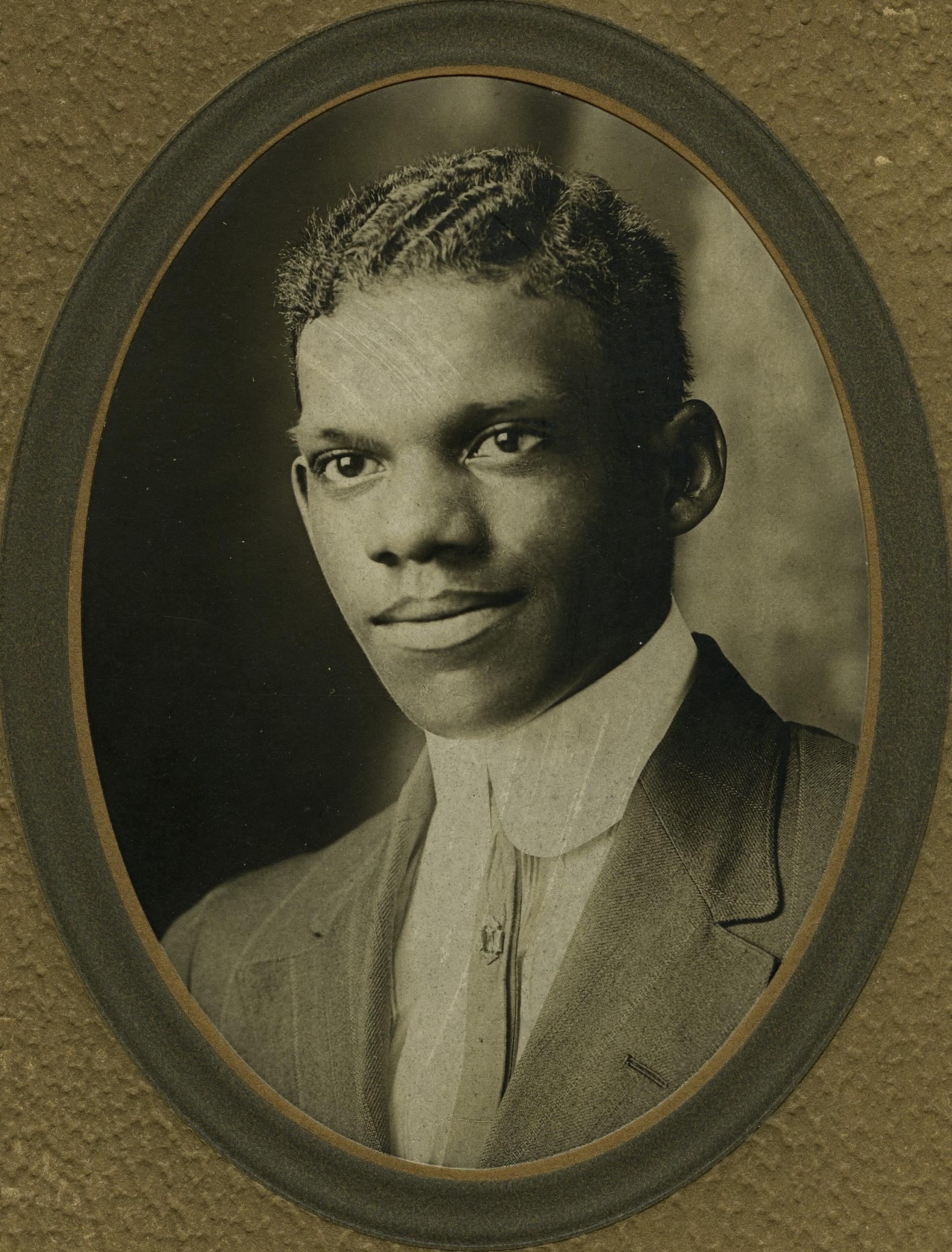William Frank Earnest
Memorial Stadium (1402 S. 1st St, Champaign, IL)
The historic colonnades that grace the University of Illinois’ Memorial Stadium, dedicated in 1924, bear the names of Illinois students who died in World War I. One of those students was William Frank Earnest, the first African American from Champaign County to die in the war.
William Frank was born on September 3, 1895, in Greene County, Tennessee, the son of Oliver Frank and Hester C. Earnest, both formerly enslaved. He was eight when his family moved to Homer, Illinois. As a student at Homer High School, he was the editor of the Homerian yearbook and graduated with high honors in both academics and athletics with the Class of 1915.
William Frank began his studies in agricultural science at the University of Illinois in 1915. While he was attending the University he became a member of Kappa Alpha Psi Fraternity, Inc., was active in campus activities, and showed immense promise.
When World War I broke out, William Frank enlisted in the 8th Infantry Regiment of the Illinois National Guard in May 1917. It would become the 370th Infantry Regiment in the US Army. This was the only unit with a full complement of African American officers in the then segregated military. He attained the rank of Sergeant. His death was described by Capt. William S. Braddan, chaplain to the unit and the pastor of Berean Baptist Church in Chicago.
“Three days had passed since our arrival, we had lost three hundred men, killed and wounded Sgt. Ernest [sic] of Co. ‘L,’ being the first to make the supreme sacrifice on Hindenburg’s Line, one of the most excellent, exemplary soldiers I have known in my twenty and four years’ service. His body, poor, bleeding, torn and mutilated was buried in No-Man’s land by his comrades.”
William Frank died on September 17, 1918. He is buried at the Oise-Aisne American Cemetery in Fere-en-Tardenois, France. The column bearing his name is on the east side of Memorial Stadium, exactly aligned with the 50-yard line of the football field.
This trail stop is sponsored by:
Decade:
1890-1899
1910-1919
People:
- William F. Earnest
Location(s):
- Homer, Illinois
- University of Illinois, Illinois
Additional Homer Trail Sites


